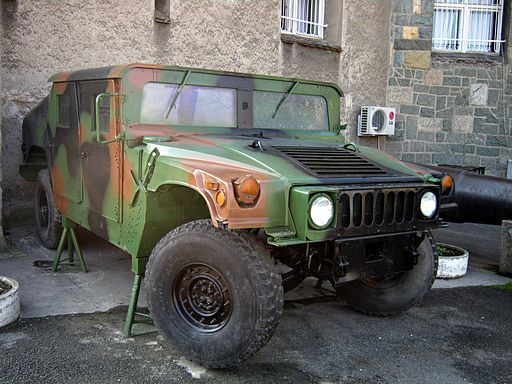The Humvee – that tough-as-nails, go-anywhere beast of a machine – has been the military’s mainstay for decades. Its unmistakable shape is a global symbol of hardiness and dependability. It’s seen action in war zones, swooped into disaster-stricken areas for aid delivery, and even nabbed starring roles in blockbuster movies. But have you ever wondered why we call it the ‘Humvee’? Let’s unravel the story behind its name and dig into its captivating history.
The tale of the Humvee takes us back to the late 1970s. The U.S. military was on the hunt for a new all-purpose ride to take the place of its then-aging M151 jeeps. This replacement wasn’t going to be just any vehicle; it had to tick a number of boxes – from hauling heavy cargo and tackling the most challenging terrains to braving all kinds of weather conditions.
This new vehicle was officially named the ‘High Mobility Multipurpose Wheeled Vehicle’. It was an accurate and descriptive name, capturing the core characteristics of the vehicle. However, like most complex designations, it was destined to be shortened. The abbreviation of the official name, HMMWV, was pronounced as Humvee, and it didn’t take long for the catchy name to stick.
Just as the Humvee’s robust and versatile nature appealed to the military, the name Humvee resonated with soldiers and the general public alike. It was easier to say, remember, and it carried a certain weight and boldness that befitted the formidable vehicle. Thus, while ‘High Mobility Multipurpose Wheeled Vehicle’ was the official military classification, ‘Humvee’ soon became the popular, colloquial term we know today.
One key event that further cemented the use of the term ‘Humvee’ was the Gulf War in the early 1990s. The conflict was one of the first wars to be extensively covered by live television. As the Humvee played a prominent role, the name was frequently mentioned in news reports and broadcasts, embedding it into public consciousness. It symbolized not just a military vehicle but an embodiment of resilience, agility, and reliability.
But the journey of the Humvee didn’t stop at the battlefield. In 1992, AM General, the company behind the Humvee, launched a civilian version named the ‘Hummer’. This move further popularized the ‘Humvee’ term, as the connection between the civilian Hummer and its military predecessor, the Humvee, was regularly highlighted in the media.
While the term ‘Humvee’ started as an abbreviation of a cumbersome technical title, it has come to represent much more. The Humvee is an iconic symbol of durability, versatility, and power. Like the vehicle itself, its name has navigated the rough terrain of language to find a permanent and well-earned place in our lexicon.
For more insights into the Humvee and other important historic ships, planes, and vehicles, visit Aces In Action. Here, you’ll find an amazing piece of artwork by Craig Tinder titled “M998 HMMWV,” that depicts the revered High Mobility Multipurpose Wheeled Vehicle (HMMWV) or better known as the ‘Humvee’. The limited edition canvas print even includes an actual piece of supplemental door armor from a U.S. Military HMMWV.
“M998 HMMWV” – Humvee Military Art Print by Artist Craig Tinder
Known as the Humvee, the High-Mobility Multipurpose Wheeled Vehicle (HMMWV) M998 replaced the M151 series Jeeps in 1989. The M998 is capable of transporting a payload of 2,500 lbs, has a 60% slope climb, and can ford 60 inches of water – all with a ground clearance of 16 inches. The HMMWV is the world standard in off-road military trucks and can be configured for a variety of missions including troop transport, cargo/utility carrier, ambulance, TOW missile & machine gun platform, scout-recon, and much more.
To purchase or see similar items, visit here.
Commissioned by Museums, Treasured by Collectors





Share:
What is the Cutty Sark famous for (beyond just the whisky)?
What was the Most Feared Tank in World War II?